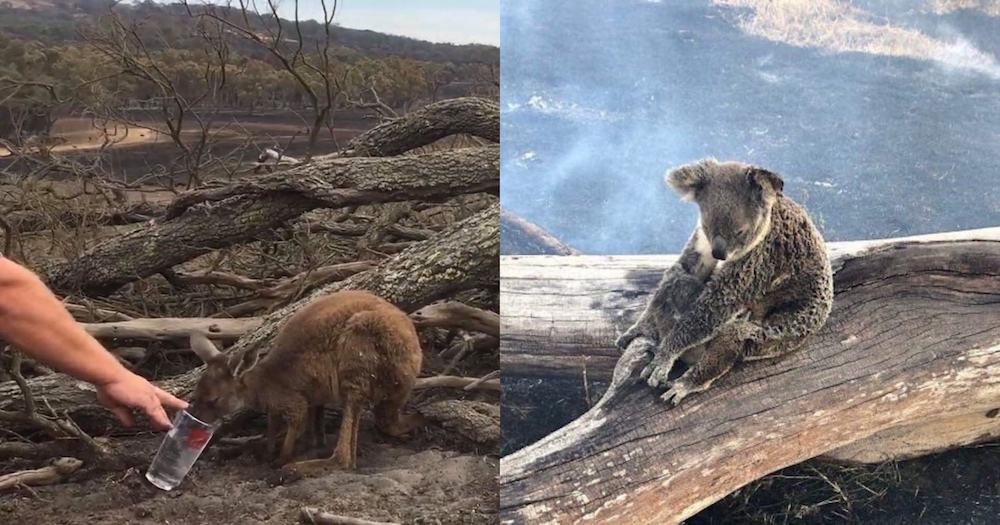Ecologists in Australia fear that almost half a billion animals have lost their lives to the bushfires.
Animals killed in the fire includes mammals such as koalas, and reptiles such as skinks (lizards) and frogs.
As the number of fires in Queensland, Victoria, and New South Wales continues to rise, the death toll of animals is likely to increase.
Unprecedented continent-wide bushfires
As of Jan. 2, 2020, 110 fires are still raging across NSW with over 50 uncontained.
At 5.30am there are 110 fires burning across NSW with over 50 yet to be contained.
— NSW RFS (@NSWRFS) January 1, 2020
Firefighters will make the most of more favourable conditions today to protect properties before deteriorating conditions again this Saturday.#NSWRFS #NSWFires pic.twitter.com/vb3o55n8XU
While a number of Australia’s native flora and fauna are reliant on fire to reproduce and bushfires occur seasonally, the scale of bushfire this time is unprecedented and almost continent-wide.
Australia has lost an area of more than three million hectares to the fire thus far and this is much more devastating than the usual area of 280, 000 hectares burnt in a season in the past few years, according to the NSW Rural Fire Service.
Scientists cited record-breaking drought as one of the key reasons for this devastating fire.
480 million animals suspected to have perished
The deadly blaze has destroyed homes of animals and some of them could not outrun the fire in time, especially slow-moving animals such as the koalas.
Of all animals, koalas are affected the most as they are usually found on eucalyptus trees which contain oil that vaporises in the heat and makes the plant highly flammable.
Other animals that are threatened by the fire include wombats and kangaroos.
Heartbreaking footage of kangaroos fleeing has been captured in Monaro, NSW, as bushfires close in.
— news.com.au (@newscomauHQ) December 31, 2019
For more fire updates: https://t.co/m3qKpIZsu5 pic.twitter.com/Jo6MDtuygC
Do people realise how bad it is in Australia right now? An area the size of Belgium has burnt to the ground & over half a million animals have been wiped up #AustraliaFires #AustraliaBurns pic.twitter.com/KY3Ux1Sko2
— Deric (@deric_tv) December 30, 2019
Speaking to the Daily Mail, an ecologist from the University of Sydney, Chris Dickman, estimated that about 480 million mammals, birds, and reptiles have been killed, both directly and indirectly, by the flames since September 2019.
https://twitter.com/sopphie/status/1212964089971916800
class='fb-post' data-href='https://www.facebook.com/southerncrosswildlife/posts/2633581763373585?__xts__%5B0%5D=68.ARAE_LiOqtoRPP-QXqUSBkxGTemE6mewobK4YpnXfHIxpA3a_7Z_Kny93oDluR6bknewZcYMJNpvPjuxlTHoQcgI5Ar6NigswxGw8N6ODVQfhbu45Ecn4_duTNNHXdi7laKcyiQ5zyqoNl088zmNoAdQwcE13j5HSUII4UpAqHWP1Y9a9a9Lf7uzFqIiQudPauIynoNRH3hAWIPTzvY4TLxBGip-szgO-r1dogc-3HNo2WTCCbQfhJMaq6cAvB2l9QVUSyWZwTB8xSzmDjlIynFtzBFvHXOiJYEPPUIlP1p-F5owJQ7GGHULLxih1VCVnxLKA8nFCsh4Gghpz4q-4-ksBf0MgTIkIliq0Z7aRBaMeCEH61Tl7LjQxmstzjZi6QT-MRbYCNlXMz10ixZWyi_-069RLs0iLXflj1_dpl8y5QmJVd8U4lZn6lin3zQqB8xjP3QrUUiGGhGps-AuaZZBujsgL25xAm4jhysQ3bgXAK8JdliEe5UT&__tn__=H-R'>
"We're getting a lot of lessons out of this and it's just showing how unprepared we are," said Science for Wildlife executive director, Kellie Leigh.
This resulted in wildlife carers risking their lives to save the animals without proper safety measures.
Top image from Jimboomba Police and Wildlife Rescue Sunshine Coast
